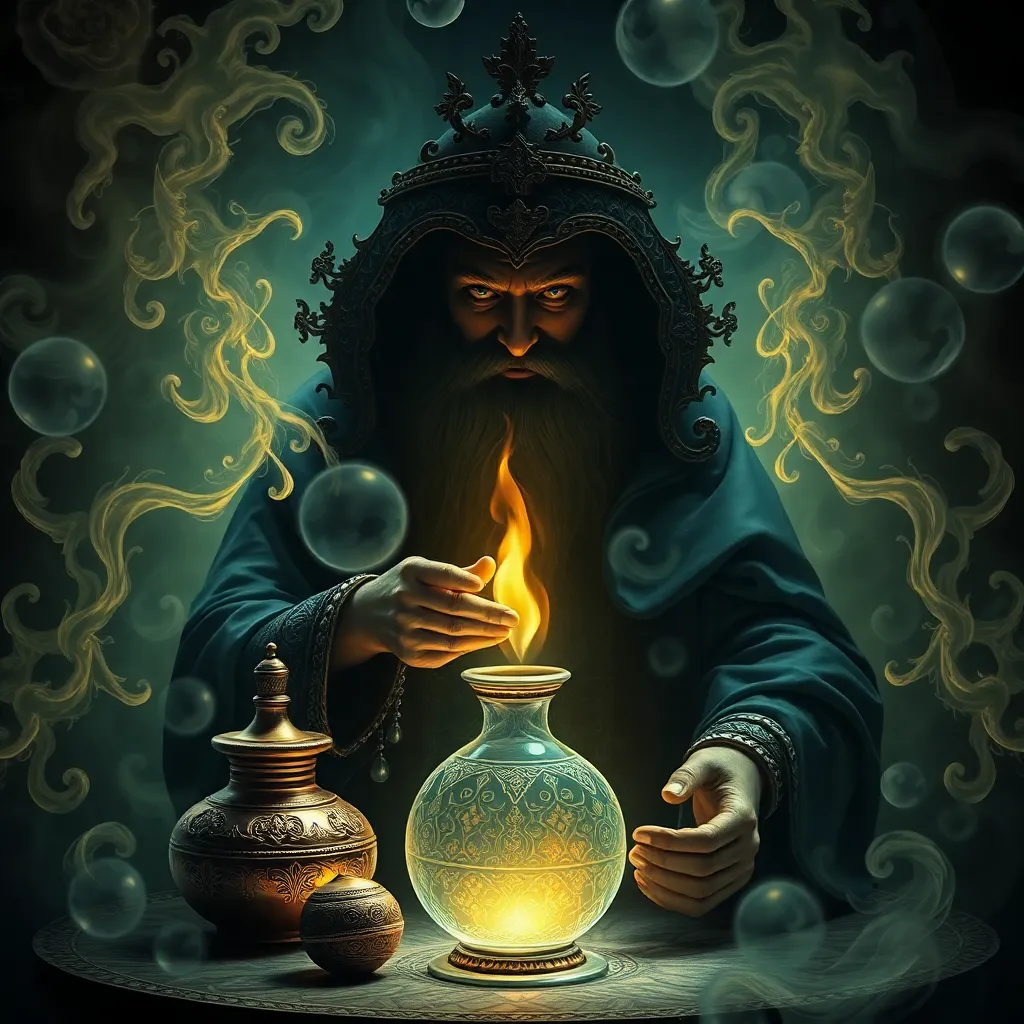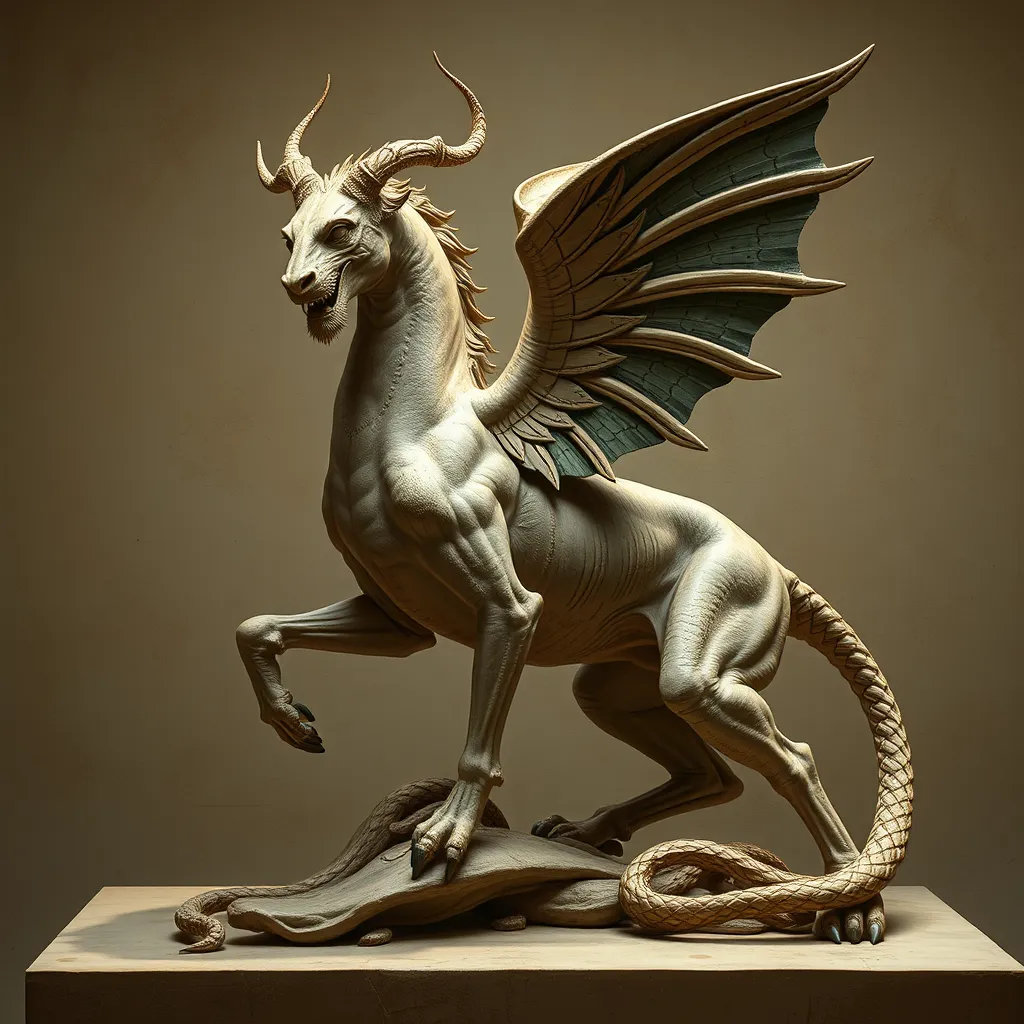The Simurgh and the Elixir of Life: A Journey Through Persian Alchemy
I. Introduction to Persian Alchemy
Persian alchemy, a rich and intricate tradition, encompasses a wide range of philosophical, spiritual, and scientific endeavors aimed at understanding the nature of matter and the cosmos. It emerged in the context of ancient Persian culture, building upon the earlier traditions of Babylonian and Egyptian alchemy, and was deeply intertwined with the mystical and philosophical currents of Zoroastrianism and Islamic thought.
The significance of alchemy in Persian culture cannot be overstated; it served not only as a precursor to modern chemistry but also as a metaphysical framework for exploring the relationship between the material and spiritual worlds. Within this tradition, the Simurgh and the Elixir of Life stand as key symbols, representing profound truths about transformation, enlightenment, and the quest for immortality.
II. The Mythical Simurgh: A Symbol of Transformation
The Simurgh is a legendary bird in Persian mythology, often described as a large, majestic creature with the ability to fly great distances and transcend the ordinary realms of existence. Its origins can be traced back to ancient texts, including the Shahnameh (Book of Kings) by Ferdowsi, where it is depicted as a wise and benevolent being, embodying the essence of purity and wisdom.
Characteristics and attributes of the Simurgh include:
- Wisdom: The Simurgh is often portrayed as a guardian of knowledge.
- Healing: Its feathers are said to possess restorative powers.
- Connection to the Divine: The Simurgh symbolizes a bridge between the earthly and the celestial.
In the pursuit of knowledge and enlightenment, the Simurgh plays a pivotal role as a guide for seekers. It represents the transformative journey that one must undertake to achieve a deeper understanding of oneself and the universe.
III. The Concept of the Elixir of Life
The Elixir of Life, a central theme in alchemical traditions, is often defined as a substance that grants immortality or eternal youth. Historical interpretations of the Elixir vary, but it is commonly associated with the ultimate goal of alchemical practice: the transmutation of base materials into noble ones, signifying spiritual awakening and enlightenment.
The Elixir’s connection to immortality and spiritual awakening is profound. It symbolizes the transformation of the mundane into the divine, encouraging practitioners to seek inner purity and wisdom. Key alchemical processes associated with the Elixir include:
- Calcination: The process of burning away impurities.
- Distillation: Purifying substances to extract their essence.
- Coagulation: The final stage of creating the Philosopher’s Stone, which is believed to produce the Elixir.
IV. The Interplay of Myth and Alchemy
The Simurgh embodies many alchemical principles, serving as a metaphor for the transformation that takes place during the alchemical process. The bird’s ability to soar high into the sky symbolizes the goal of ascension, where the seeker transcends the limitations of the material world.
Symbolism of flight and ascension is prevalent in alchemical practices, often representing the soul’s journey toward enlightenment. The journey toward the Elixir can be seen as a metaphor for personal transformation, where the seeker must confront their inner challenges and emerge renewed.
V. The Journey of the Simurgh: The Conference of the Birds
Attar’s “Conference of the Birds” is a seminal work in Persian literature that narrates the spiritual journey of a group of birds seeking the Simurgh. The story serves as an allegory of the quest for self-realization and divine connection.
The quest for the Simurgh holds significant importance, as it reflects the challenges and trials faced by the seekers. Each bird represents different human flaws and obstacles, illustrating the need for personal growth and transformation.
Parallels between the birds’ journey and the alchemical process are unmistakable. Just as alchemists strive to transform base materials into gold, the birds must undergo a series of trials to discover their true nature and the Simurgh within themselves.
VI. The Influence of Persian Alchemy on Western Thought
The historical transmission of Persian alchemical ideas to the West was facilitated through translations and interactions during the Islamic Golden Age. Persian scholars played a crucial role in preserving and expanding upon the works of earlier alchemists, thus influencing European thought.
Key figures influenced by Persian alchemy include:
- Roger Bacon: An English philosopher and alchemist who drew upon Persian texts.
- Paracelsus: A Swiss physician who integrated mystical and alchemical concepts into his work.
- Isaac Newton: His interests in alchemy were, in part, influenced by Persian traditions.
Modern interpretations and adaptations of the Simurgh and the Elixir can be seen in literature, art, and spiritual practices, showcasing the enduring impact of Persian alchemical thought.
VII. Contemporary Relevance of the Simurgh and Alchemy
In today’s world, the Simurgh serves as a symbol of hope and resilience, representing the potential for transformation amidst adversity. Its story inspires individuals to embrace their journeys, reminding them that growth often comes from challenges.
Alchemical practices and philosophies continue to resonate in contemporary culture, emphasizing personal and collective transformation. The ongoing quest for knowledge, self-awareness, and spiritual awakening reflects the timeless appeal of these ancient symbols.
VIII. Conclusion
In summary, the significance of the Simurgh and the Elixir of Life within Persian alchemy highlights the profound relationship between transformation and enlightenment. These symbols invite individuals to embark on their journeys of self-discovery and growth.
As we explore the enduring legacy of Persian alchemy, we are encouraged to reflect on our paths and seek our own Elixirs of Life, fostering a deeper understanding of ourselves and our place in the universe.
Ultimately, the lessons of the Simurgh and the alchemical tradition urge us to embrace transformation as a fundamental aspect of the human experience.



